In the first installment of “Queering the Workplace”, I talked about my story and the process of how I finally became comfortable wearing the men’s fashion that I’m most comfortable in to work. It’s now time to talk about the practical aspects of what to wear. This second installment focuses on queering workplace fashion from the waist up.
What you wear to work obviously depends greatly on the type of work you do. Someone working as a creative in an ad agency will probably have a significantly different dress code than a Wall Street lawyer. As for me, I’ve worked primarily in a corporate environment as a client-facing consultant. So naturally, this has impacted what has been appropriate for me to wear to work.
Essentially what I like to maintain is a mix and match wardrobe for those days when I don’t need to wear a suit to work. If you look in my closet, you will see a myriad of blazers, pants, sweater vests, button-down shirts, neckties, and bowties that can be assembled in dozens of different variations.
Shirts and Cuff Links:
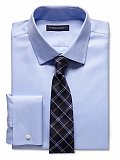
First come shirts. I opt for primarily button-downs. I wear them either alone or with a sweater vest since I think they appear dressier for a corporate environment than simply a sweater with nothing underneath. In addition, whereas some dapperQs may still stick to women’s cut shirts due to sizing issues, I opt for men’s cut shirts since I like the styles better and feel more comfortable in them. Where the main questions come are with the sizing and cut.
With some of the good but still lower-end fashion stores, such as H&M, many button downs in the men’s department come in small, medium, large, etc. and not include a specific neck size. This may work if you’re not planning on wearing a tie since the size of the neck won’t matter as much in cases where you intend to simply leave the top button open. However, if you’re planning on wearing a tie, a button down should never be too big around the neck. To find a more appropriately fitting shirt, you’ll need to have your neck measured for your accurate sizing. (You can also do it yourself with guidance from this dapperQ video.) You really don’t want to be wearing a 16 inch neck if you only need a 14 ½ – you will literally be swimming in the shirt and any tie that you wear won’t fit appropriately and just appear frumpy. Most men’s clothing stores will be able to measure you.
One disadvantagewith wearing only men’s shirts is that women’s frames generally run smaller than men’s, and thus we need smaller sizing in the neck. The smaller sized shirts (14 ½ to 15 ½ inches) are sometimes difficult to find since they are the less in-demand men’s sizes. However, I assure you that they’re out there – you may just need to look a little harder. Often times at the higher end stores when I don’t see my size on the shelf, a sales associate will be able to find it for me in the back.
I always maintain my button down shirt collection to include the essential solid colors, including white, black, blue, and gray, as well as some other brighter colors. Yes, that includes pink and purple. Even the more “feminine” colors are great to keep in the wardrobe since they can be combined with the appropriate sweater vest, blazer, and/or tie to really brighten up an outfit. In addition to solids, it is essential to have a few striped, plaid, or other non-flashy patterns, to round out your mix and match options.
As for cut, many of the higher end stores, such as Brooks Brothers, have different cuts for shirts, such as regular cut and slim fit, that will enable you to find the best fit for you. So, if you’re a woman with a smaller frame who likes to wear men’s shirts, slim fit may be the best option. I think that in order to look “dressed-up” for a corporate environment, clothes should never be overly baggy, and wearing a trim fit if you’re a smaller frame is the best way to have appropriately fitted clothes without spending a chunk of change on tailoring.
French cuff (also known as double cuff) shirts are a good way to dress up an otherwise plain outfit. This season, French cuffs seem to be harder to find than in the last couple years. However, they’re still out there. You will generally need to search them out in the mid to higher end stores, such as Banana Republic and Brooks Brothers, although lower end chains like H&M will sometimes have certain styles of French cuffs in stock.
With French cuffs, you will of course need cufflinks. Cufflinks are a highly underestimated accessory that can spark an outfit with a bit more color and style. Like most other accessories, you can spend as little or much as you want on cufflinks. I’ve purchased cufflinks at Target, various men’s tie and accessory shops, high-end men’s fashion stores, and online. The options, like almost anything else you can buy, are limitless.
Here’s an important tip on shirts: where the option is available, always go for the no-iron or easy-iron shirts. They’re one of the most amazing inventions ever spawned by the clothing industry.
And of course, sweater vests:
 If you know me, it’s not a big surprise for you to hear that sweater vests are one of my core fundamentals of my wardrobe, including, but not exclusively, at work. In fact, I will admit that I think sweater vests are one of the greatest pieces of clothing created. I remember when I bought my first sweater vest years ago, I felt as if I had found my uniform for life.
If you know me, it’s not a big surprise for you to hear that sweater vests are one of my core fundamentals of my wardrobe, including, but not exclusively, at work. In fact, I will admit that I think sweater vests are one of the greatest pieces of clothing created. I remember when I bought my first sweater vest years ago, I felt as if I had found my uniform for life.
My wardrobe is riddled with sweater vests in a variety of colors, although black, gray, and brown are essentials. In addition, having a couple subtle pattern sweater vests to mix it up, such as argyle (of course), help to add variety to a wardrobe that could otherwise be dominated by solid colors. As for the style and cut, I stick to men’s v-neck sweater vests, and typically go for the more fitted style as opposed to baggy or oversized simply because they look dressier for work.
It goes without saying that certain times of the year are not appropriate for sweater vests, though I often try to push the limits of appropriate with this issue. Although the summer months in NYC are a long awaited time of year, I also mourn the passing of spring since it is that time when I have to put the sweater vests away until fall comes along. It is quite the bittersweet time of year for me. However, I cannot lie – on those cooler summer days, my sweater vests might make appearance. I love those cool summer days when this is possible.
Blazers:
Not to stereotype, but I think blazers may be synonymous with transgressing men’s fashion, and for this reason, they are another cornerstone of my wardrobe. I wear blazers both casually and in more formal environments. Whether you dress one up or down simply depends on what you wear under it.
 Blazers are essential to a wardrobe since they allow you to drastically change your outfit by putting it on or taking it off. It seems simple enough, but it really is like having the option of wearing two different outfits on the same day just by making this small change. Having solid colored blazers is essential, but patterned blazers bring character to the outfit if many of your wardrobe’s other mix and match items are solid colors.
Blazers are essential to a wardrobe since they allow you to drastically change your outfit by putting it on or taking it off. It seems simple enough, but it really is like having the option of wearing two different outfits on the same day just by making this small change. Having solid colored blazers is essential, but patterned blazers bring character to the outfit if many of your wardrobe’s other mix and match items are solid colors.
As for fit, blazers are a similar situation to shirts – depending on your frame, you may want regular cut or you may want to specifically seek out slim trim blazers. Zara Man is one of my favorite stores to purchase blazers since many of their cuts are typically slim fit.
The number of buttons on any jacket is something to consider. One button blazers are not as common in men’s fashion as in women’s fashion, but are definitely available. However, I tend to avoid them since I don’t care much for the style and they don’t appear as dressy as two or three button blazers. Two button blazers tend to be the standard now and look good on most body types. Three button blazers are definitely stylish and look classy. However, if you have a short torso, the two button option may be better to go with so the jacket doesn’t make you look shorter than you already are – which is something I always need to consider.
Ties:
I love ties. I have a vast collection of dozens of neckties and bowties. However, I only occasionally wear ties to work. This is primarily because in many corporate environments, business casual – not business formal – is the standard now, except for in situations when dealing with clients. In a typical office environment now, every day men’s fashion usually does not include ties anymore.
In the past couple years I’ve moved to wearing more bowties than neckties. The reason for this is because, well, I like the nerd look and think bowties suit me better. In addition, bowties seem to be coming back in style, and though I hope the bowtie fashion doesn’t catch on like wildfire because I do like being fairly unique in this respect, I urge anyone who wears a bowtie to get “real” (or non-tied) bowties instead of pre-tied bowties. They’re dressier, and once you learn how to tie a bowtie, you’ll never go back to the pre-tied ones.
In the next installment of “Queering the Workplace,” we’ll explore other practical aspects of transgressing men’s fashion in the workplace, including suits, pants, and tailoring.
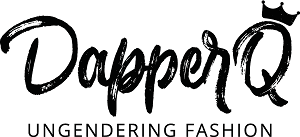
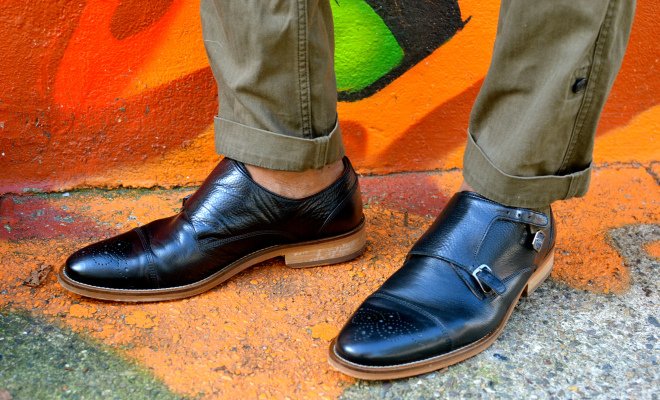
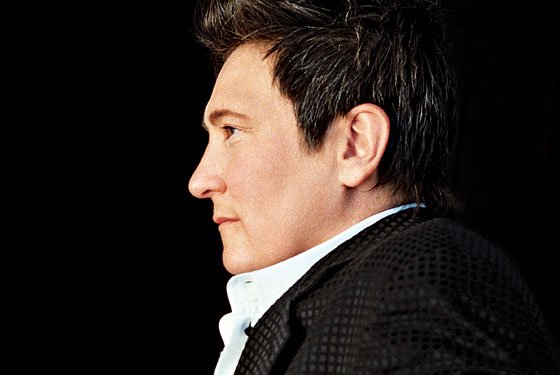
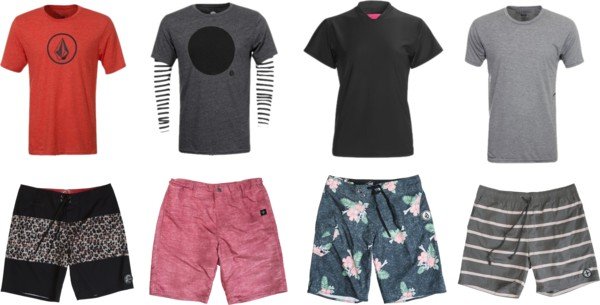
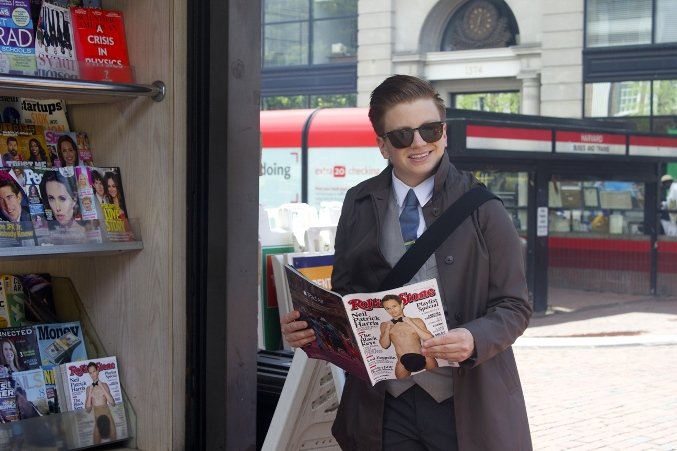
Great article and very thorough.
A couple of thoughts on dress shirts. You mention no-iron shirts, which are great for staying mostly wrinkle-free. But folks should keep in mind that no-iron fabrics often do not breathe or wick away moisture as well as untreated natural fibers like cotton or linen. No-iron shirts usually either contain a percentage of synthetic fiber like polyester, or if they are 100% cotton, the cotton is treated with a special solution that both reduces wrinkles AND makes it a lot less breathable. Some people are not bothered by this. It really depends on your body, the weather, and how much you layer your clothes, but this non-breathable quality may not suit everyone. Personally, I’ve owned some no-iron shirts before, but they’ve all gone the way of the butch clothing drive because I cannot handle them in New York’s humid climate.
Also, if you have trouble getting a nice men’s shirt that fits to your liking, I highly recommend trying a custom shirt making service that will make a shirt to your exact specifications. There has been a proliferation of custom shirt makers online in the last few years, and it is more affordable than you might think. You can get a custom shirt for the same cost or less than Brooks Brothers or Banana Republic off-the-rack prices. Standing at 5’2″ and with my non-standard-for-a-man proportions, I have never been able to find an off-the-rack shirt that would fit perfectly. It’s always been a compromise: too long in the sleeves, too tight in the hips, etc. Now, I pay $50 per shirt on average for a good quality custom shirt that fits like a dream, no alterations required. And of course, with custom shirts, you get to choose cuff, collar, buttons, and other options; you design something unique that expresses your style.
RE: shirt fits, you have some great suggestions, and I’d like to throw another out there–though it’s on the “pink” side of the line, a few basic sewing skills can do wonders for the fit of your clothes. I started out doing hems and taking in shirts (I’m scrawny but tall), and now I make my own shirts and trousers from scratch, to my specifications.
There’s nothing more transgressive fashion-wise, IMO, than having total control over your clothes!
Another awesome and informative article in the series. I am really enjoying your writing.
I share an aversion to no-iron shirts with Jesse. Perhaps it’s all the years I spent doing the ironing as part of my chores. Perhaps it’s all the old-school thrift store button-downs and linen shirts, shorts and trousers I’ve worn over the years. But, in general, the quality of fabrics and shirts that require ironing is far superior to permanent-press version. Cotton and linen are extremely comfortable. And linen drapes like an aristocrat’s bespoke shirt.
Everyone’s got their own likes and dislikes when it comes to drudge work. I can tolerate cleaning, I love cooking all-day/every-day, but I hate tidying. I like doing laundry (even by hand), but I loathe folding it.
Ironing I like. It’s pretty easy once you figure out the tricks and the tools that make it easier, like a nice water bottle for spraying, an arm-board for pressing sleeves, maybe a little light starch for sharp-looking collars (outside only, for comfort): that kind of stuff.
Having spent a few hours yesterday researching cravats and foulard tying, I’m fairly confident that there’s a treasure trove of ironing how-to videos on Le YouTube. Also, ironing demonstrably gives back for the time you spend on it. When you don a crisp button-down, fitted and ready to make magic with your tie, looking at the sharp creases and the epic smoothness of the fabric is a pleasure in its own right.
I’m 5′ 3″ and have been looking forward to having some shirts made. I’m extra-inspired after reading your story, Jesse. There seem to be a wide range of custom-shirt makers now.
Scooter, I’m down with the seamstress skills too. As in, I wish I had more, but I can get by and I love creating stuff and altering clothes to fit.
I’ve got rather short legs and I also seem to want clothes that are either exorbitantly-priced or made for Gargantua or Tinkerbell. Right now I’m fixated on the idea of corduroy knickers, preferably wide-wale, with button closures below the knee. After a significant amount of research, I found some corduroy shorts (on sale!) that I can convert into knickers that will be the basis of my 1927 newsboy outfit: black short boots, black or colored/patterned socks, sweater and newsboy cap. Add a tie or ascot of course.
And having some sewing skills makes Halloween, dyke marches and parties a lot more fun.
The CAPTCHA rejected me again, and looking over my post, i realize that I’ve just written an exhortation for ironing and sewing. Oy. But, seriously, it’s all in the name of freedom, looking good and having fun.